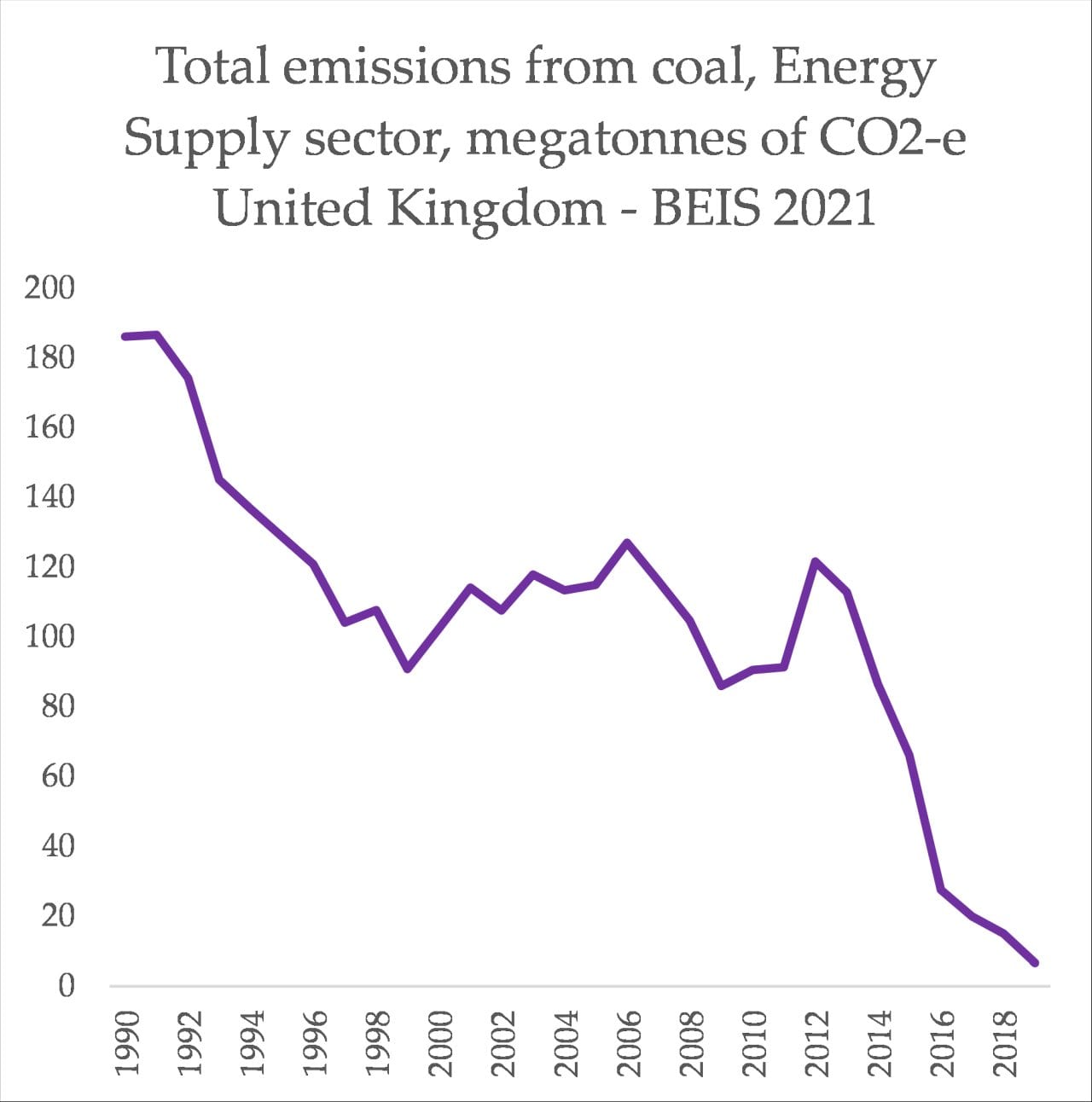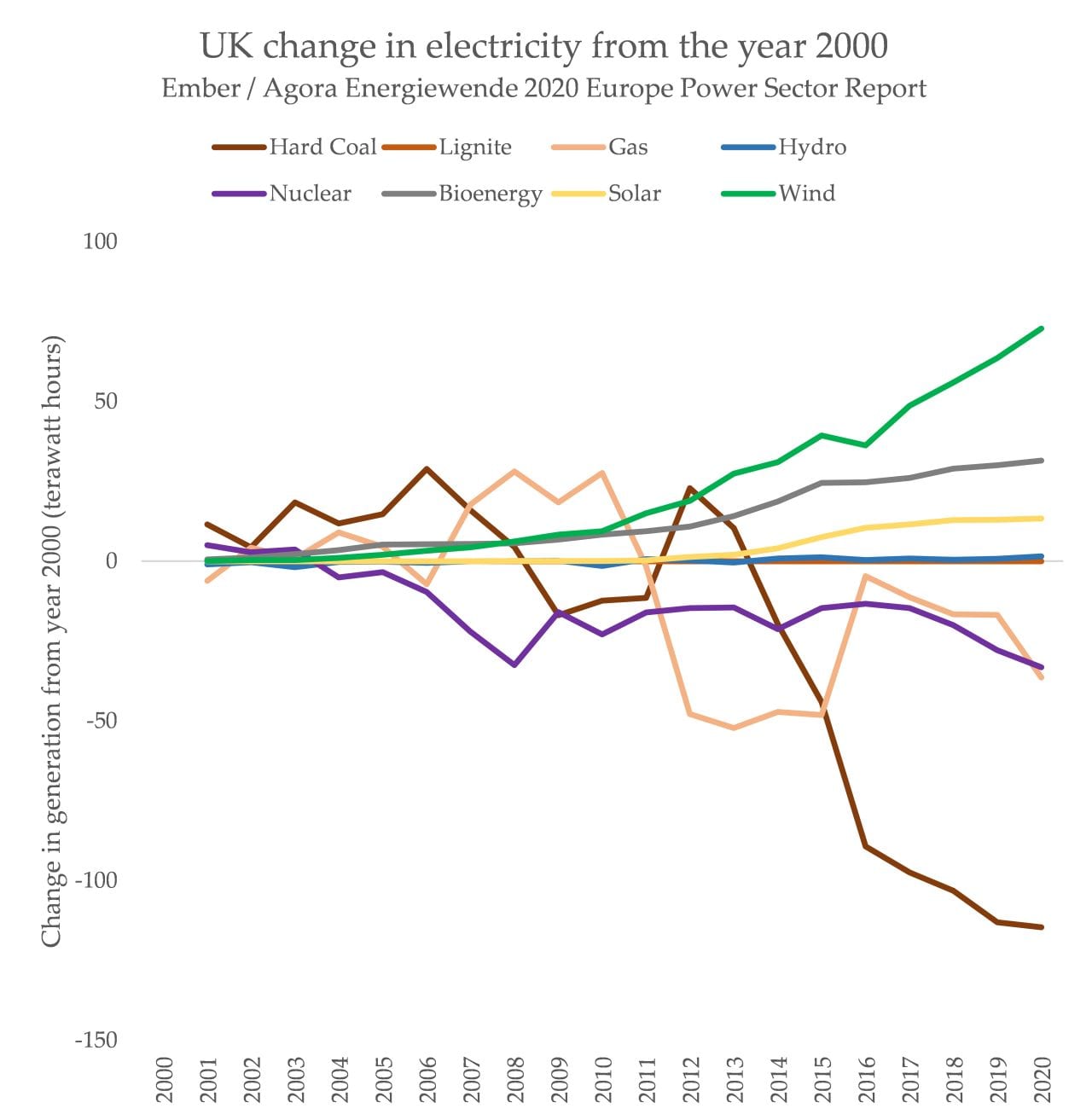Finalised estimates of the UK’s greenhouse gas emissions from the years 1990 through to 2019 show that wind and solar have played a major role in the country’s pathway towards lower national emissions, with a deep potential for these two technologies to drive future change in the country as efforts to electrify more sectors expand.
“There was an 8% fall in emissions from the energy supply sector between 2018 and 2019,” wrote the Department for Business, Energy & Industrial Strategy (BEIS). Between 1990 and 2019, emissions in the UK fell a stunning 66%.
“This decrease has resulted mainly from changes in the mix of fuels being used for electricity generation, including the growth of renewables; together with greater efficiency resulting from improvements in technology”.
Historically, the energy sector has been the largest in terms of national emissions, but it is now the second largest since 2016, with first place being taken by the UK’s transport sector.
The demise of coal-fired power generation has been at the core of the drop in emissions. “Since 1990 there has been a decline in the use of coal at power stations and an increase in the use of gas, which has a lower carbon content so results in fewer emissions. Coal use in generation reduced by 96% between 1990 and 2019.”
In 2019, gas-fired power generation remained static while the use of renewables increased 9%. The data confirms a dynamic playing out in the country whereby much of the recent change is being driven by renewable energy. As gas persists, nuclear power reaches shut-down ages and other sectors electrify, the task for renewable energy will increase.
The UK’s new finalised emissions data also confirms that a wind-down of the country’s coal, gas and oil extraction sectors has contributed significantly to falling emissions. This slice of the country’s energy sector emissions shows extractive industries highlighted in green:
A recent release by analytics firm Ember Climate found that the UK achieved a milestone in 2020 (not yet covered in the country’s emissions data) for its power grid, with the combined output of wind, solar, hydro and bioenergy eclipsed the output of fossil fuels for the first time on record. The trend is set to continue, and of those technologies, it is wind that has done the heavy lifting, with bioenergy and hydro static since the mid 2010s and solar only growing slowly.
If Australia were to follow along a pathway of similarly deep cuts to emissions in the grid, the rapid shutdown of coal-fired power stations would have to be a priority. But accelerating their shutdown has not been a focus of either of the major party’s climate policies and there is little chance this will be broached prior to the next election.
In a report by the UK’s Climate Change Commission, independent advisors to government on climate policy found that it was wind and solar that would deliver the bulk of the ‘work’ in the future power grid, along with a range of grid integration options, such as new transmission lines, demand response and battery storage.
The United Kingdom’s power revolution, underway but well on the right path, could serve as an inspiration to Australia, to start clearing space for rapid new renewable growth by shutting down redundant coal-fired power stations. The latest emissions data shows the benefits are immediate, and significant.














